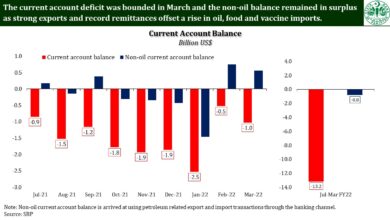Sri Lanka’s president and premier resign over the economy.

Calm returned to the streets of Sri Lanka’s commercial city of Colombo on Sunday, and demonstrators were elated as President Gotabaya Rajapaksa agreed to resign.
Protesters crowded inside his whitewashed colonial-era home on Saturday, plunged into the pool, and perched on a four-poster bed. Others set fire to Ranil Wickremesinghe’s home after he decided to resign for an all-party administration.
Rajapaksa plans to quit on Wednesday, the parliament speaker announced.
After months of mishandling the problem, thousands of people asked Rajapaksa to step down, and nonviolent anti-government protests grew on the island near major shipping channels.
On Sunday, demonstrators remained in the president’s destroyed mansion.
Some took selfies of the pristine interiors, which contrasted with their suffering. The 22 million-person nation is short on food and fuel, and June’s inflation touched 54.6%.
The COVID-19 outbreak hit Sri Lanka’s tourism-reliant economy and cut remittances from overseas employees.
Government debt, increased oil prices, and a restriction on importing chemical fertilisers last year all exacerbated the problem. November reverted the fertiliser prohibition.
Speaker Mahinda Yapa Abeywardena said Rajapaksa stepped aside to ensure a smooth succession of power. “Respect the law and maintain peace,” he said.
Wickremesinghe, a six-time premier, agreed to resign, his office said. Local news networks showed a large fire and smoke from his Colombo neighbourhood home.
When the buildings were attacked, neither Rajapaksa nor Wickremesinghe were home.
Two defence ministry sources claimed Rajapaksa left Friday as a precaution before the event. Reuters couldn’t confirm his location.
Uncertainty surrounded a power transition. The speaker talked about what was decided at a political party meeting on Saturday. One of the things that was decided was that an acting president should be chosen within a week.
The International Monetary Fund is in talks with Sri Lanka for a $3 billion bailout and is closely monitoring the situation.
“We hope for a settlement of the current crisis,” the global lender added.
It expressed concern over the economic crisis’s impact on the people.





